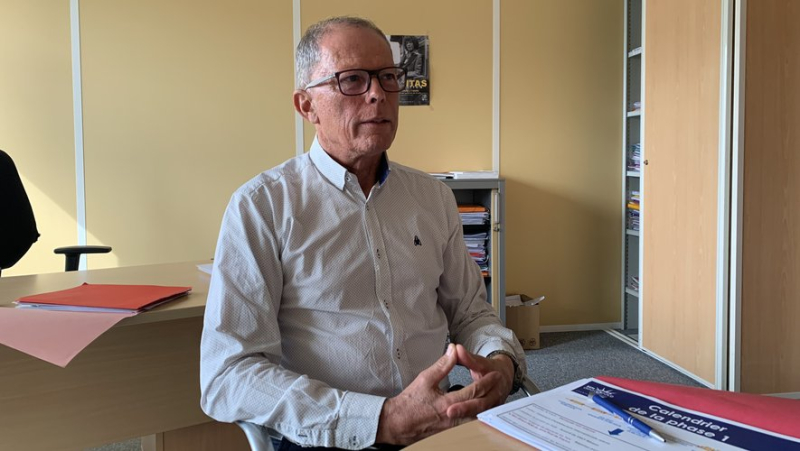Future TGV Montpellier-Perpignan line: “The Sud de France station will have to serve as a relay to ensure that Sète remains attractive”

The elected official chairs the dialogue commission for phase 1 of the project. – VICTOR GUILLOTEAU
The vice-president of Sète Agglo chairs the territorial dialogue commission set up by the company Ligne Nouvelle Montpellier-Perpignan (LNMP). He explains its role and the issues at stake.
What is the purpose of this territorial dialogue commission? ?
Its aim is to study all the projects that could accompany the construction of this line. It will notably discuss the service to Sète, the economic impacts on the territory, the environmental data, etc. The commission will bring the subjects back up. The objective is to do everything possible to ensure that this line is accepted as well as possible by the population. To support these projects, there is a budget that corresponds to 0.4% of the total cost of the works. For us, this is still insufficient.
“Our challenge is to maintain the attractiveness of the territory. “Our future depends on it”
Why is it only being created now ?
We must start with the LNMP company chaired by Carole Delga, which is a project financing company created in 2022 and intended to collect funds (on this project, 40% from the state, 40% from local authorities and 20% from Europe, Editor's note). I am on the board of directors, appointed by the elected representatives of Sète Agglo. Within the steering committee, co-chaired by the regional prefect and Carole Delga, four commissions were created, including that of territorial dialogue, which I was therefore appointed to chair. I also insisted that the mayor of Poussan, a town particularly concerned by the project, be present.
When it was installed at the beginning of September, the commission was concerned about the future service of the Sète train station. With this LNMP, how are you going to maintain its attractiveness ?
We know that areas that are not served by high-speed lines lose their attractiveness. This is our main challenge: to maintain the attractiveness of the area. Today, we are four hours from Paris, and we know how important it is for the people of Sète, tourists and spa visitors (25 to 30% come by train) to be well served up to here. As early as the 2021 public inquiry, we were on a route closer to the motorway, in particular to avoid passing close to the Issanka spring, which supplies 50% of Sète's water.
But the declaration of public utility (DUP) of February 2023 definitively froze the project. It is the one proposed by the SNCF, generating this 1.4 km viaduct for more than 20 m high in Poussan. It is a reality, and the state of mind of the Agglo is to play national and European solidarity. But this project is not positive for the territory, it brings nothing. Moreover, the communities of the Thau basin are only concerned to the tune of 1.26% for the financing, i.e. 12.4 M&euros. on phase 1 of the project, smoothed over forty years. 600,000 € have already been invested.
What SNCF commitments are you working on ?
We are told: "The market will continue to serve Sète". But we want guarantees! Our future depends on it. We are firm on one point: if the line does not go through Sète, then there must be a strong link with the Sud de France station in Montpellier, so that it becomes a “relay station” for Sète. This is a basic principle that we want to set in stone through the Serm (Metropolitan Regional Express Service), which aims, in the long term, to schedule the TER trains on the Sète-Montpellier coastal axis. We want a direct relay. This continuity between the TGV lines in Sud de France and the TER line to Sète is a strong idea. This is, moreover, consistent with the emergence of a business district in the South of France and the development of the eastern district of Sète.
“Making this viaduct a heritage object, almost a source of pride”
The ALT collective has long been warning about the need for dialogue with the population. How will you involve citizens in this dialogue commission ?
We have a constructive dialogue with ALT. We have the same issues as them, we completely converge and share their concerns. We will bring all public authorities into play to move in their direction, namely to preserve the environment and ensure service to the Sète train station. A committee dedicated to the Poussan viaduct has been created. A consultation will focus on the future structure. Citizens will be questioned from the first public meeting, on November 7, in Poussan.
We have also set up a digital consultation that meets ALT's expectations. We will designate around forty citizens to participate in the workshops until the end of 2025, in order to work on the profile of the viaduct. The conclusions will not be decision-making, but will be used to integrate the viaduct into the landscape. We have obtained an international architectural competition for this work. It is a very good thing. It is an ambitious project and we hope to make this viaduct a heritage object, almost a source of pride.
I subscribe to read the rest




